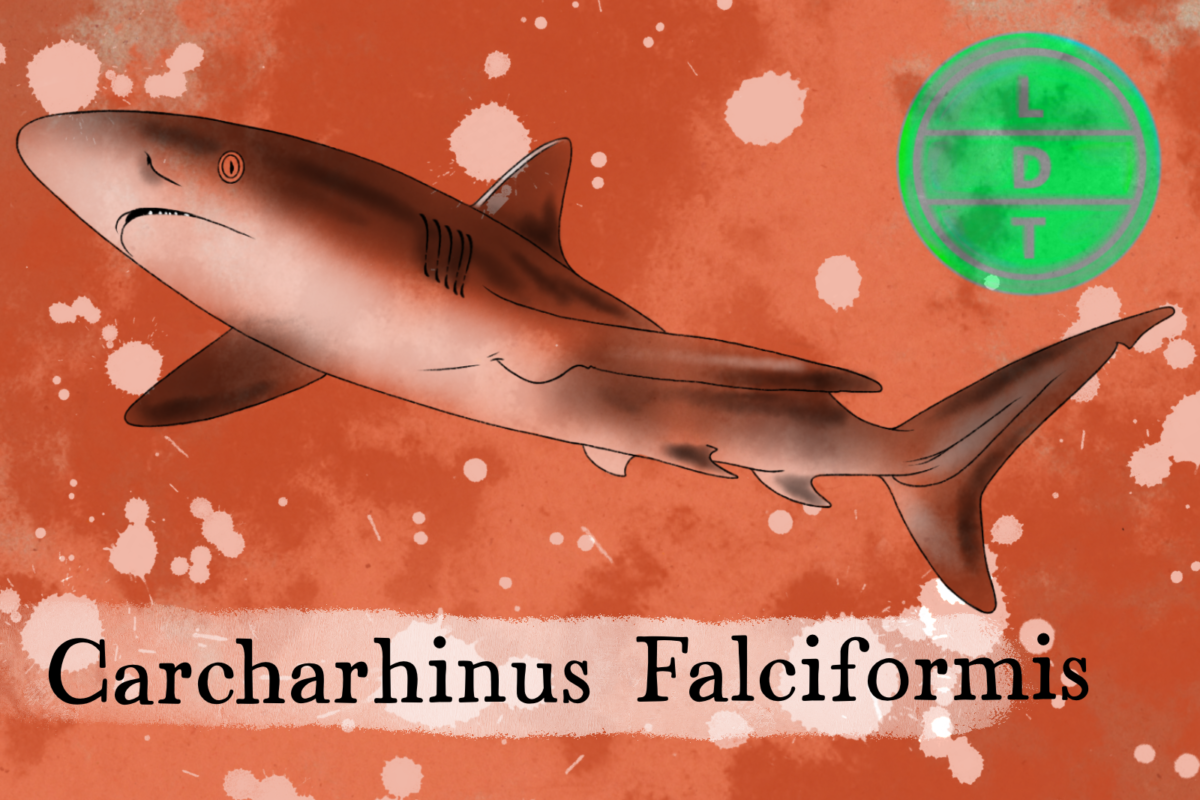“…and today we’re talking about a shark that isn’t as smooth as it sounds, but it is hot. But more on that later.”
In this housing market, sometimes you find yourself living in some unlikely places. But some silk sharks live in a place that is slightly more challenging than a three-story walk up with paper thin walls. Nature has a range of biomes, which all have their challenges, but few are as inhospitable as geothermically active areas. But you know what they say: if you can’t take the heat, get out of the volcano, in Life, Death, and Taxonomy.
Description of the Silky Shark
- Looks like a typical reef shark
- Slim, streamlined body, smaller dorsal fin, long snout, and relatively long pectoral fins
- Countershaded gray up top and white underneath
- Large mouth full of sharp teeth – 17 rows
- Has a third set of eyelids called nictitating membranes for protection.
- Pretty big shark overall
Measure Up
Welcome to the beloved Measure Up segment. The official listener’s favorite part of the show! The part of the show when we present the animal’s size and dimension in relatable terms through a quiz that’s fun for the whole family. It’s also the part of the show that’s introduced by you when you send in audio of yourself saying, singing, or chittering the words Measure Up into ldtaxonomy at gmail dot com. We don’t have a new Measure Up intro!
Shark Tank 2:30
Length
- 2.10–2.14 m (6.9–7.0 ft)
- How many silky sharks go into the length of the Silk Road?
- Hint: The Silk Road was a Eurasian trade route that was used between from the second century BC until the mid-15th century. It was famously traveled by Marco Polo.
- 3,017,142 sharks.The road had many routes, but it ultimately spanned 6,400 kilometers (4,000 miles).
Weight
- 346 kg (763 lb)
- How many silky sharks go into the amount of silk mulberry silk worms produce each year?
- Hint: Mulberry silk worms are the larvae of the domestic silk moth. They are native to northern China, Korea, and Japan. A single cocoon is made of a strand that is up to 900m long.
- 91,743 sharks. They produce 70 million pounds of silk annually.
Fast Facts about the Silky Shark
Range: Lives all over the world as long as the water is relatively warm. It prefers the open ocean and can dive down up to 1600 ft in search of food.
Diet: Like many sharks, he loves him some fish. But will also eat squid, nautilus, and crabs. Several sharks may come together to herd fish into a bait ball
Behavior: Like many sharks, they are ovoviviparous. The embryos develop inside the mother rather than other fish where they lay eggs that develop outside. They are sensitive to low-frequency sounds and can be called from hundreds of years away. They have a bite force of 890 newtons. Doesn’t really come into contact with humans since it lives in the open ocean. Only six reported attacks and none were fatal.
Major Fact: Shark Boy and Lava, Girl!
Scientists went to a submarine volcano called Kavachi, near the Solomon Islands. They were surprised to find a thriving ecosystem living in the volcano, including large animals like the silk shark.
What’s more surprising is that this volcano isn’t dormant. In fact, it’s one of the most active volcanoes in the South-west pacific ocean.
That means eruptions.
It also means the water is extremely hot and extremely acidic. When they say hot, it doesn’t necessarily mean boiling. Temperature drops quickly as you get away from the lava. When lava enters the water when a lava flow goes from earth to ocean, the water a few feet from the heat is only 88 degrees C (190 degrees F). That’s not cooking anything down there, but you’d think it would act as a deterrent.
The acidity is more of a problem. Anyone that keeps a fish take knows how delicately you need to manage the pH balance. However, silk sharks along with jellyfish and other spices seem to be attracted to the vent despite near constant eruptions.
We aren’t totally sure what happens to the sharks when the volcano blows.
An article on Snowbrains.com said, “It could be the case that they sense an imminent eruption and temporarily leave. Or, perhaps the sharks blow up when the volcano does.”
There was an eruption in 2022, since we discovered sharks living in the crater. Researchers rushed to the site to see what was going on.
They found temperatures 50 degrees warmer and the acidity even more intense, but no sharks. Also, no chard shark bits.
My theory is that they sense seismic activity with their lateral line system.
Why do they live there? We aren’t sure. It’s possible that the volcanic ecosystem is centered around animals that thrive on the geothermal chemicals, sort of like around those deep sea vents.
The sharks may be attracted to prey that thrives on volcanic activity.
Ending: So dive down to the depths, take a bite out of the nearest bait ball, and set up next to a volcano like the supervillain silk shark here in LDT.

